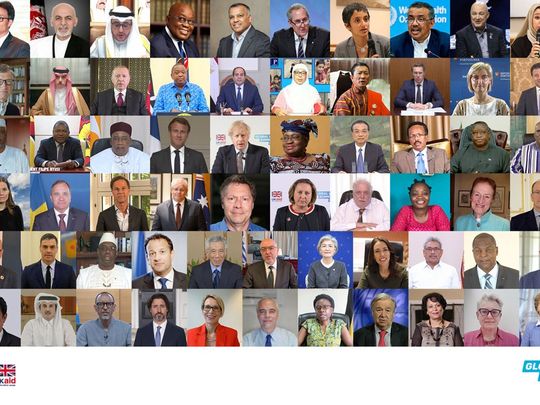
DUBAI: The virus has forced upon us a kind of self-discovery, through a slow-motion shock of a new, bewildering reality.
In the time of COVID, we’ve all realised: Working from home works.
People can meet without meeting each other. The only limitation: the speed of your connection.
This has forced a major rethink. Now, it's remote everything — learning, gaming, partying, praying, policy-making, pledging. And then there's also remote oath-taking, judging, marrying, burying.
What the numbers say
The world of work had been turned on its head. A recent poll shows a trend everyone already knows: 73% of employees “enjoy” working from home, according to a World Economic Forum/Accenture survey published on August 19, 2020.
The poll surveyed employees who never worked from home before the outbreak.
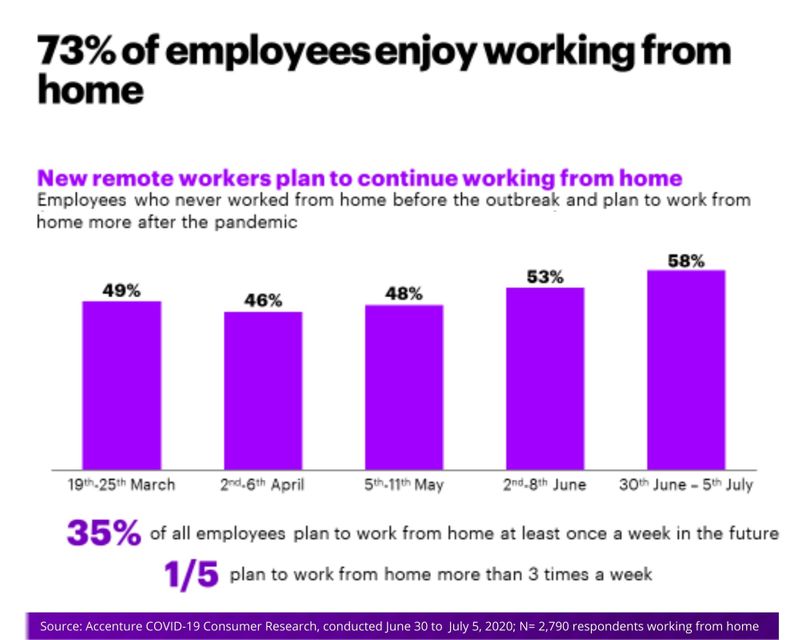
The new remote workers plan to continue working from home. And 35% of employees plan to work from home at least once a week in the future; 20% plan to work from home more than three times a week.
Businesses, NGOs and government organisations sent their staff home to work virtually. Work from home has found its big moment.
There's an upside: The pandemic has enabled work groups via video team calls.
This “cloud-based” conferencing has not only enabled existing industries; it is also creating new ones, while rendering others obsolete.
This is particularly important in work settings that don’t need physical presence (outside of manufacturing, healthcare, transport, logistics, energy, for example).
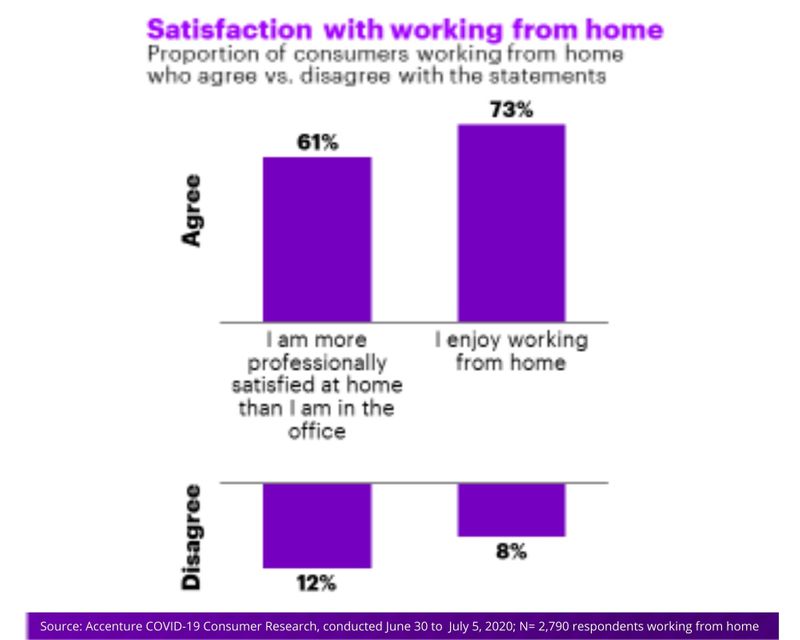
Benefits of remote work
Experts say there’s no turning back. The social distancing, movement restrictions, lockdowns across the world made us all realise the benefits of remote work. Among these are:
- Less risk of spreading/contracting infections (when it's prevalent)
- Less time spent commuting, less CO2 emissions
- Improved employee retention
- Flexibility to move to low-rent areas
- Access to a wider pool of applicants
- More autonomous employees
- Lower operating costs
- Better use of technology
- Reduced salaries
- Less parking headache/fees
- Less accident, car maintenance cost
- Increased productivity, overall
Changing nature of work
It turned out that the pandemic is not the only reason to work remotely. From the point of view of both employers and employees, it’s changed the nature of work too. Forever.
In this tech-driven world, you could be on another planet, yet never too far away from your team. That’s thanks to the so-cloud “cloud”, riding on the 4G, and soon, 5G revolution.

Features, performance
After reviewing a number of video conference apps, we've picked the ones that work well, with ease of use and other standout features that set them apart from the pack.
Our top picks for 6 video call apps for work:
- Zoom — Reliable, large video calls
- Google Meet — For G Suite users
- GoToMeeting — For professional features
- join.me — A lightweight option
- Webex — For whiteboarding
- MS Teams — Works in Microsoft environment, rich in feature (but clunky)
Zoom, a video communication app founded by Eric Yuan in 2011, went from 10 million meeting participants in December 2019 to 300 million meeting participants in April 2020. That’s a 3,000% surge in usage.
Investors also gave Zoom a vote of confidence: its stock price went from $68.72 on January 2, 2020 to $266 per share on August 17, 2020, a 424% increase in value.
Education
A year ago, it was unimaginable for students to have 100% e-learning. Today, e-learning has become the default mode. Despite teething problems, parents have adjusted to the new reality. As the days and months rolled by, it turned out to be a more flexible, with a more personalised experience.
For students and teachers, video conference has opened a new way to impart knowledge.
A UAE government poll has revealed that 59% of students’ parents prefer distance learning, as opposed to studying in school for the first term of the academic year 2020-2021.
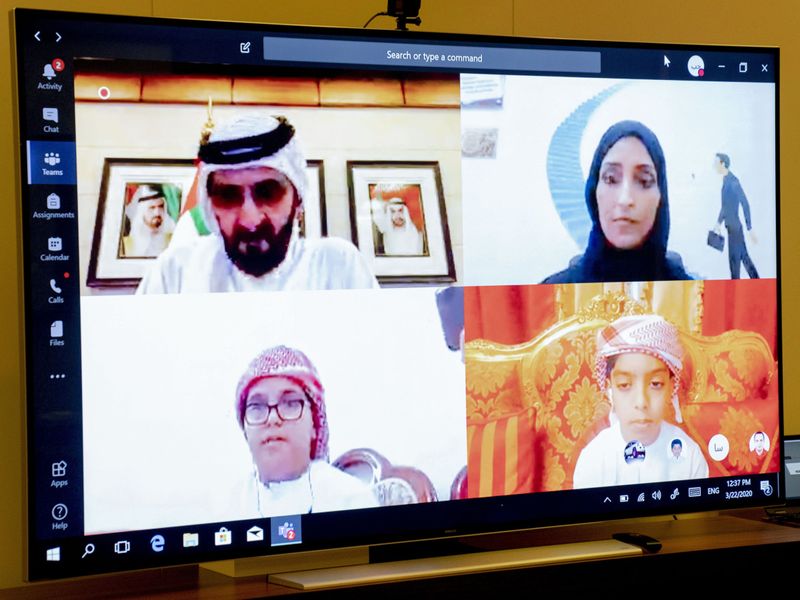
In the survey conducted by the UAE Ministry of Education with 28,171 respondents, a majority said they would rather choose distance learning for their children, while 41 per cent preferred physical schools.
The Abu Dhabi Department of Education and Knowledge (ADEK) has allowed parents with children enrolled in private schools to opt for distance learning during the upcoming school term.
A survey by GEMS, one of the largest education providers in the UAE, found that more than 90% of the students were satisfied with remote learning.
Can distance learning change education, for the better? The jury is still out, but the presence of e-learning schools and tools can no longer be denied.
As in most endeavors that require more than two persons, communication is key. Today, from nursery rhymes and grade schools to corporate and Cabinet meetings, sales pitches to online events, video meeting apps have taken the centerstage.
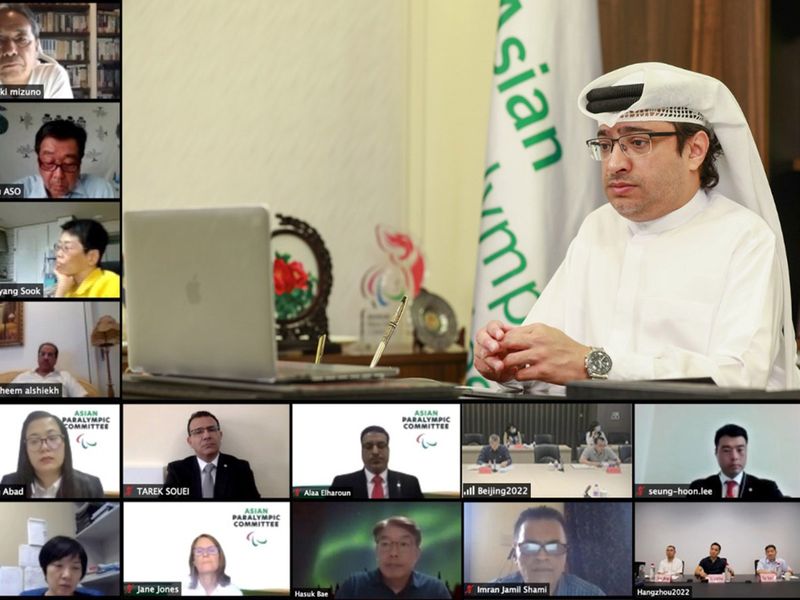
Companies that were dependent on socialization and networking, were overnight turned to virtual events and webinars. Friends, political parties and families, too, have taken their meeting online, too.
I'm able to take my time to focus on the right tasks, instead of worrying about leaving the office before rush hour hits. I think a lot of people (me included) didn't realise just how quickly life was passing us by.
I believe we kind of underestimate time because it's not possible to be 100 per cent productive 100 per cent of the time. I didn't realise how fast-paced my life was prior to this, and in turn, how exhausted I really was trying to keep up with everything.
I spent 10 hours a week commuting and by the time I got home from work I was always too exhausted to do anything, and then on the weekend I would seize the opportunity to see my friends and catch up on my social life.
I could only ever really dedicate perhaps an hour from my Saturdays indulging in watching a show and putting a face mask on. This is a global crisis. But a part of me genuinely believes that some good will come out of this; I think everyone to varying degrees needed a chance to pause and breathe.
I hope that these trying times will end. But maybe we can use this time to instill new habits, and perhaps even a new appreciation of working from home.
I'm taking more care of myself now, I'm working out, I'm on a regular diet, I'm able to go back to painting, and generally everything I've ever wanted to do is more or less possible for me now. And, I am producing more and better work.
- Hiba Hani, Business Development Manager for a lighting design company
Do teleconferences get the work done?
Like any tool, it can be used to its fullest potential — or misused as an excuse for an all-talk-no-work sort of thing.
Every human endeavor starts with meeting of minds. Agreed workflows, tasks or sub-teams are just the starting point. Resources must be optimised, limitations considered and deadlines met.
What happens in between the virtual meetings — chats, quick calls that may take place throughout the day (and night), or on a 24/7 basis.
The key to all these: People. The attitude each member brings into the mix, the posture and willingness to get real work done, after and in between these virtual meetings.
To be sure, remote work has changed the world of work. But it’s what every individual member does when the meeting is off that counts.
(With inputs from Yousra Zaki, Assistant Editor Features)








